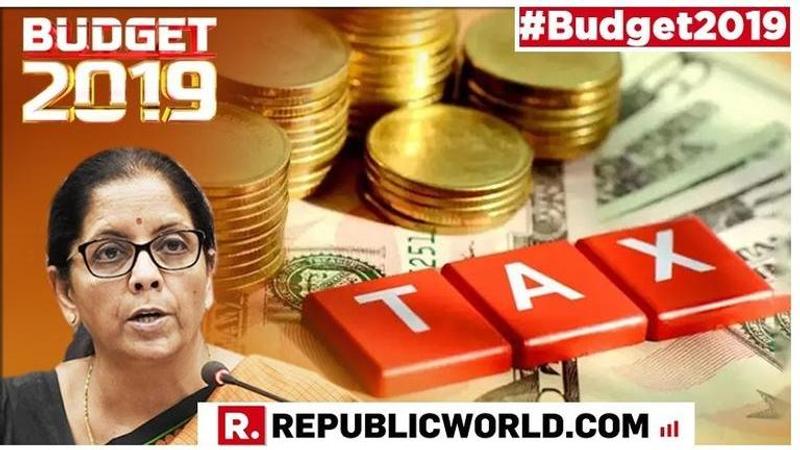Published 07:56 IST, July 5th 2019
Union Budget 2019: How are tax slabs decided?
Below are the different slabs according to which income tax is evaluated in different categories of income tax assesses, as per the Union Budget 2018. Income tax slab rates indicate the annual revenue threshold boundaries that apply a greater or lower tax rate.

A mini-stimulus to take the economy out of five-year low alongside giving some tax relief to common man may be on the cards, as Finance Minister Nirmala Sitharaman does a tightrope walk balancing the needs of the economy and fiscal constraints in her maiden Budget.
The Budget to be presented on Friday is expected to boost spending at the cost of short-term slippage in fiscal deficit targets as she lays down the Modi 2.0 government's road map for the economy and the nation in the next five years.
Some believe she may give relief to the common man by raising personal income tax threshold for certain categories while at the same time, upping spending on agriculture, healthcare and social sectors.
So, this brings us to an important question — how are tax slabs decided in India?
Taxes differ with income of a person. And how much one is responsible to pay corresponds to distinct tax slabs. Tax slabs on revenue/income refer to distinct revenue/income rates and their tax liabilities.
Key factors on the basis of which income tax plates are relevant include:
- Assessee's income
- The assessee's residential status
- Assessment year
- Tax rate
- Income tax Charge
- Maximum amount / threshold limit until revenue is not taxable
- Gross income
Given below are the income tax (I-T) slabs that were applicable for financial year 2018-19 (assessment year 2019-20).
The basic exemption limit for an individual depends on his/her age as well as his/her residential status. According to age, resident individual taxpayers are divided into three categories:
1. Resident individuals below the age of 60 years
2. Resident senior citizens of age between 60 years and above but below 80 years
3. Resident super senior citizens of above 80 years of age
According to the current income tax slabs, income taxation of residents under 60 years of age is as follows: income up to Rs 2.5 lakh is exempt from tax, income tax of 5% between Rs 250,001 and Rs 5 lakh ; income tax of 20% between Rs 500,001 and Rs 10 lakh ; and income tax of 30% above Rs 10 lakh.
Income up to Rs 3 lakh is exempt from tax for senior citizens (age 60 or older but less than 80 years). Income from Rs 300,001 to Rs 5 lakh is taxed at 5%, 20% from Rs 500,001 to Rs 10 lakh and 30% above Rs 10 lakh.
Income up to Rs 5 lakh is exempt from tax for super-senior citizens aged 80 and above. Income from Rs 500,001 to Rs 10 lakh is taxed at 20% and is taxed at 30% above Rs 10 lakh.
The income tax slab is applicable to:
- Any resident individual with regular source of income
- A Hindu Undivided Family (HUF)
- A company
- A firm
- An Association of person (AOP) or a Body of Individuals (BOI) whether incorporated or not
- Any local authority
Some of the major changes witnessed in 2018-2019 Budget were:
Tax rebate for middle class: Individuals with a net taxable income up to Rs.5 lakh received a complete tax rebate in accordance with section 87A of the Income Tax Act,1961.
Standard Deduction: The 2019 interim budget announced that the standard deduction limit for salaried employees would be increased from Rs 40,000 to Rs 50,000.
TDS Rental Income Threshold: The TDS rental revenue threshold rose from Rs.1.8 lakh to Rs. 2.4 lakh in the 2019 provisional budget. In addition, the income tax exemption for unsold properties rose from 1 year to 2 years
TDS Interest Income Limit: The budget also provided no TDS deduction on interest income earned from banks or deposits from the post office up to Rs. 40,000 per year. This limit used to be up to Rs.10,000 earlier.
(With inputs from PTI)
Updated 08:32 IST, July 5th 2019





